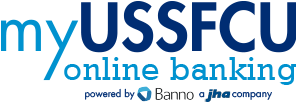529 Plans: The Ultimate College Savings Solution
Published: May 21, 2024

May 29 is 529 Day, making it the perfect time to shine a spotlight on these exceptional college savings plans. If you haven't delved into the benefits and increasing flexibility of 529 plans, now is the time to do so.
The Basics of 529 Savings Plans
First, let's cover the basics. A 529 Savings Plan is a tax-advantaged investment vehicle designed to encourage saving for future education costs. Contributions to these accounts grow tax-deferred, and withdrawals for qualified educational expenses are tax-free. Additionally, some states offer tax deductions or credits for contributions, providing a potential triple-tax benefit.
What Makes 529 Plans So Attractive
Starting a 529 plan early maximizes the growth potential through compounding. But beyond that, the plans have become increasingly versatile. They're no longer just for four-year colleges.
Many Uses of 529 Plans
529 funds can be used for a wide range of educational expenses beyond traditional college tuition. Up to $10,000 per year can be used for private K-12 school costs. They can also cover expenses at eligible vocational and trade schools, teaching practical skills for careers like HVAC technicians, electricians, or dental hygienists. Even apprenticeships, community colleges, graduate programs, and study abroad opportunities can be funded through 529 plans.
Additionally, beneficiaries can use 529 funds to pay off a portion of their student loans, with a $10,000 lifetime cap.
FAFSA Changes Improve Financial Aid Calculations
Recent changes to the Free Application for Federal Student Aid (FAFSA) make 529 plans even more appealing. Starting with the 2024-2025 academic year, funds from grandparent-owned 529 plans used to pay for a grandchild’s education will no longer be counted as student income, which previously affected financial aid eligibility.
529s Have Estate Planning Benefits
Contributing to a 529 plan can also be part of an estate planning strategy. Contributions to 529 plans are considered gifts and may be excluded from federal gift taxation up to $18,000 per beneficiary in 2024 ($36,000 for a married couple). Under a special rule, you can contribute up to $90,000 in one year ($180,000 for a married couple) and treat it as if it were made over five years. This can help reduce the size of your taxable estate.
529 Plans Can Fund Retirement, Too
A new rule from the SECURE 2.0 Act allows some unused 529 funds to be rolled over into the beneficiary's Roth IRA starting in 2024, without incurring the 10% non-qualified withdrawal penalty or generating taxable income. There's a lifetime limit of $35,000, and the rollovers must adhere to annual Roth IRA contribution limits.
Maximizing 529 Plan Perks
The ability to convert unused 529 funds to a Roth IRA extends the tax advantages and alleviates concerns about what to do with leftover money if the beneficiary doesn’t attend college. This feature is highly valued, as it reduces the anxiety of overfunding the account.
Moving Money Around
529 plans also offer flexibility in transferring account balances to other beneficiaries. If one child doesn’t use the funds, they can be transferred to a sibling or even kept for a grandchild.
Funding Strategies
To effectively use 529 plans, it's advised to aim for funding 50% of a college's sticker price through these accounts. For example, saving $260 per month from birth can help achieve this goal, considering the current average cost of college.
529 plans are a powerful tool for funding education, offering significant tax advantages and flexibility. Whether saving for private school, college, or even retirement, these plans provide a versatile and beneficial way to invest in the future.
Article information is intended for educational and informational purposes only and is not intended as ERISA, tax, legal or investment advice. If you are seeking investment advice specific to your needs, such advice must be obtained on your own separate from this educational article.
Original article source. Third-party websites are for educational purposes only. We don't endorse or control their content.



